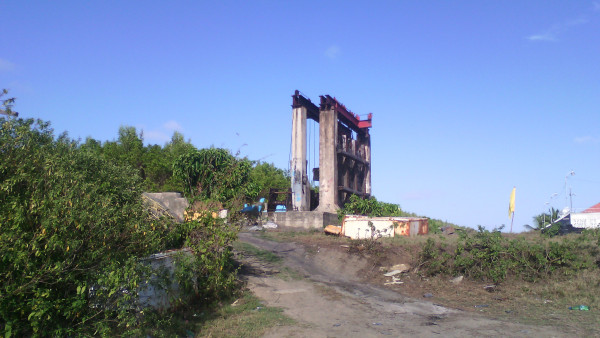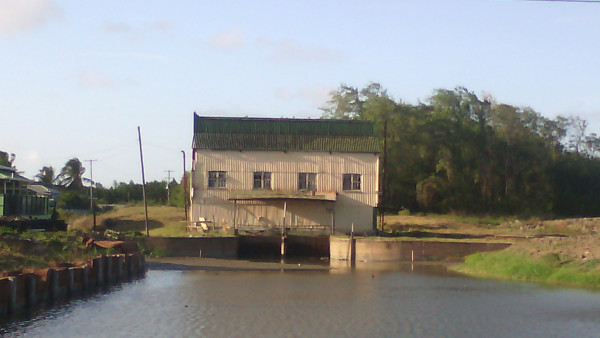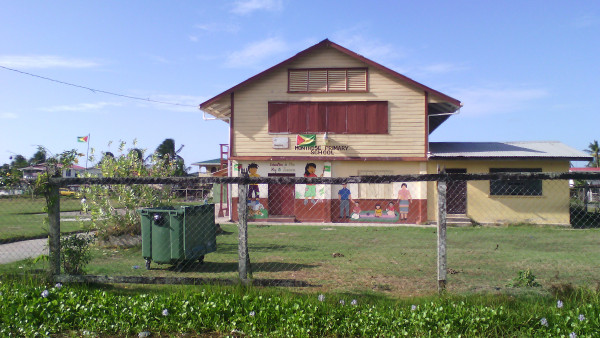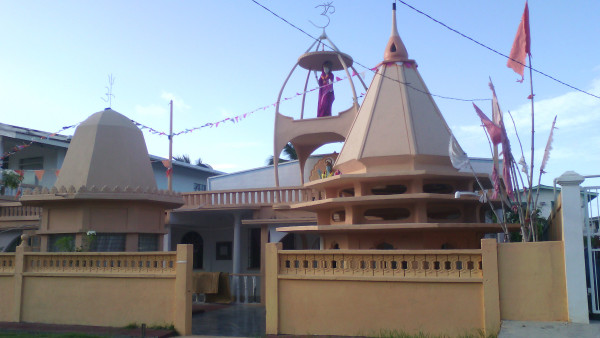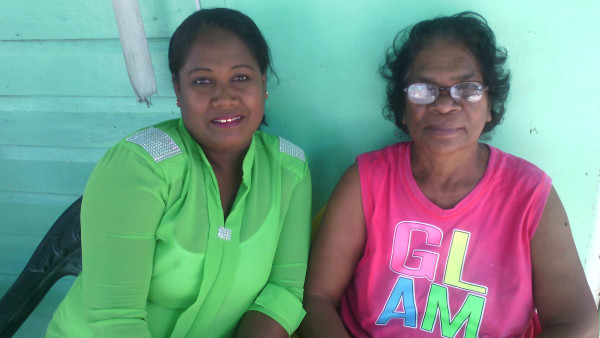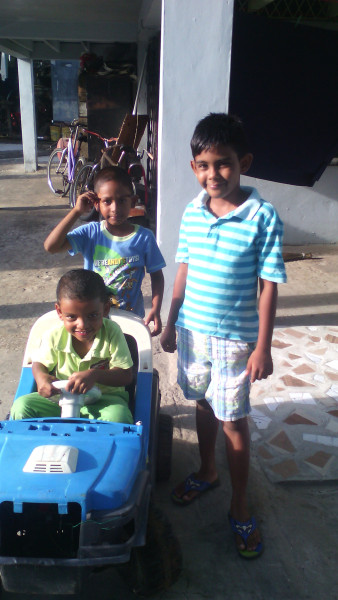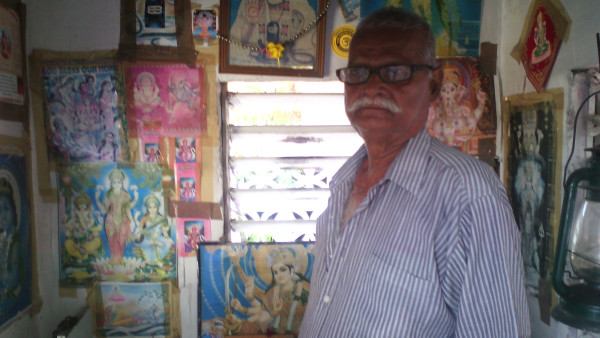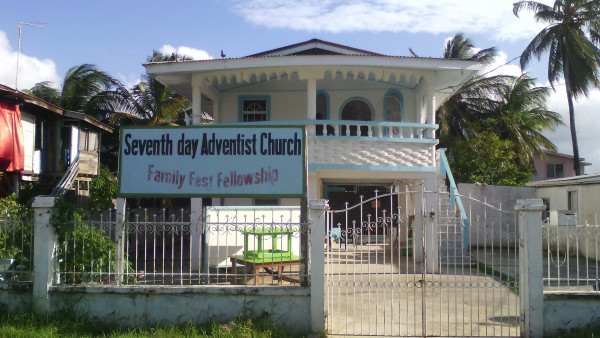Montrose on the East Coast Demerara is home to approximately 1,500 residents. Montrose begins at Broad Street and ends at Last Street and has existed since the early 1960s, according to residents.
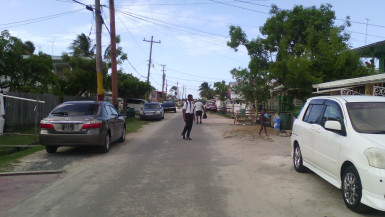
Montrose has a primary school, a mandir, a number of churches, a few bars, barber shops and beauty salons. It has an active Community Policing Group and also a youth group that plays cricket and competes against other villages on the East Coast Demerara from time to time.
Villagers enjoy basic amenities such as electricity, potable water and landline phones.
Maharanie Derichand, a resident of First Street, Montrose was chatting with her daughter-in-law Rehana Indranie when the World Beyond Georgetown showed up. Derichand moved to Montrose in 1964. “We [she and husband] was living in Plaisance and it was the time of the rioting and I went back to Anna Catherina with my parents. A day my husband was on his way to work at the LBI Estate to take a transfer to Leonora Estate [West Coast Demerara]. When he passing Montrose he see people squatting here and in the same year we build a small house here,” she said.
“The place had no drainage, no water, no light; nothing. Cows and goats use to come and graze here.
“It had like 20 houses when I come here. We had to pack up we clothes and go to the trench at the pump station and wash. The mud was terrible. By the time you reach home with the bucket water, half done to wash you foot. We use to walk to Better Hope [some three villages away] to fetch water to cook and drink. Me use to fetch two buckets at a time; one on me head and the other in me hand. That use to do for the day. Next day you got to go again. There was a time too after that when the truck use to bring tank water; then everybody use to make a line to get water before it finish. Then the people in the community form a committee and went to talk to some people and they put a stand pipe on the road. Then they run the pipes in we yards after. Not long after they start digging the drains and build roads. But the place was low so we still use to get flood. Since me move here to now I does get flood anytime the rain fall lil hard.
“When the place flood we flood we got to take all the things upstairs. We need better drainage. The NDC is responsible for the drainage here.”
According to her daughter-in-law Rehana, who lives in an apartment attached to the house, Derichand was one of the persons who got the Mandir up and running. Her husband, Derichand’s son, is the chairman for the youth in Montrose.
Every morning when she awakes, Derichand gets herself tidied, picks some flowers and prays at her altar before grabbing a cup of coffee.
At Easter, she celebrated her seventy-fourth birth anniversary with her children, grandchildren, great-grands and other relatives.
“I live here long. It is quiet. Montrose got good people. If I get flood here and can’t cook, a neighbour would prepare food and send over. Everybody live like one. We live nice,” Derichand said.
George Mangal, a pensioner, moved to Montrose around the same time as Derichand. “In the early 60s when they had the clashing [rioting], people come from all over Guyana and squat here. The road was mud and there was no light. We had to use hand lamp [kerosene lantern]. The people here quiet and cooperative,” Mangal said.
“The people living here are labourers working at the LBI Estate, carpenters, or working with government or private companies in Georgetown.
“I live here since 1965. I used to work at the University of Guyana as a labourer maintaining the place and when I retired in 2001, I was the Maintenance Supervisor for the Estate Section; thirty-two years unbroken service,” he said.
According to Mangal, they get greens and vegetables from the Mon Repos Market and the Plaisance Market on the ‘Line Top’. Vans passing through the village provide them with that same service also.
Being devout Hindus, he and his wife attend the Mandir in Second Street. When he wakes in the morning, he takes a bath and prays at his altar. He sometimes takes a ride on his bicycle to the market to get whatever is needed. Mangal tries to keep fit and at least three times a week he goes for walks on the seawalls situated behind the village.
His wife feeds pigeons in the area. Some days she will cook a roti for them; sometimes it’s boiled or raw rice. While the World Beyond Georgetown was there, she threw out some spaghetti and they came from nowhere to eat. It’s as though they were waiting and watching. Mangal says he feels responsible in some way to take care of the birds and he does the same with a few blue-sackies that visit during the day also. According to him, they know to come. He puts a little container out with fruits like mangoes, bananas and paw-paws on the verandah rail for them.
Mangal and his wife enjoy sharing and when they have sweets they call the children in their street and share whatever goodies they have.
Mangal said he enjoys living a simple life and he lives in comfort in his beautiful village. The village he said has a quiet atmosphere. “The people are friendly and helpful. If you need assistance and I say ‘man give me a hand’, they help in many ways. If you have religious functions the neighbours come over and help.”

